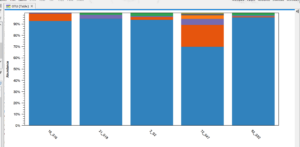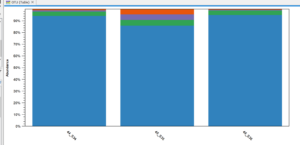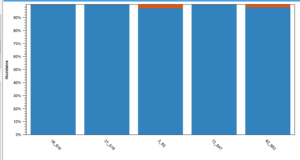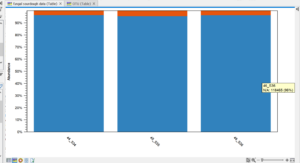This week we analyzed the sequencing results based on our research questions. My research question was, ” Do the locations the fruit were found affect the microbial composition”. To evaluate this question I used two different sets of samples, apple samples, and pear samples.
The apple samples were samples 2, 18, 21, 72, and 82. Sample 72 was found in the form of applesauce instead of in the fresh section of the grocery store. Each sample had its own unique smell so it will be interesting to see if that affects the results. The apple samples were created by Juliahna Hayes (2), Andrew Grierson (18), Jessica Aycock ( 21), Karly Stoker (72), and Ryan Burke (82). A link to each of their blogs is available in the citations section below.
The pear samples I used were samples 44, 45, and 46. Sample 44 was found in a can rather than the fresh section. Sample 45 was a Bartlett pear and sample 46 was a Korean pear which may affect the results. All the pear samples were developed by Anna Pannick. A link to her blog is located in the citations sections below.
Bacteria
- Apple Data

- Pear Data

Fungi
- Apple Data

- The samples from left to right read Sample 18, 21, 2, 72, and 82. The key for this graph is Ascomycota(Red), Unidentified fungus (green), and N/A (blue).
- Pear data

Discussion
There was definitely a difference between the microbial composition of the applesauce compared to the apples. The applesauce sample had a far larger amount of Proteobacteria and Cyanobacteria than the other apple samples and contained Actinobacteria and Bacteroidetes which the other samples did not. This could be because applesauce has different ingredients so it is hard to determine whether this difference is because of its location or because of its composition. Fungally there was no difference between the samples except for a sample portion of Ascomycota found in samples 2 and 82 both of which are samples where the apples were fresh. Even though there was a difference between the applesauce sample’s microbial composition and the other samples’, this data does not help answer the research question as it is unsure where other ingredients in the applesauce may affect the overall composition or if the location it was found had an effect.
The sample of pear that stood out from the other two was sample 45 as it contained higher amounts of Cyanobacteria and Proteobacteria than the other two samples. This data does not help answer the research question, however, as sample 45 was the fresh Bartlett pear, and samples 44 and 46 were almost identical even though they were found in different locations. The fungal composition for all three samples was almost identical.
I think this data does not show evidence that a specific type of fruit may make the starter a hospitable environment for specific microbes. If you compare the data between the apples and the pears, you can see that there are some minor differences concerning their microbial composition but, omitting the applesauce data, the microbes present are pretty much the same. There is not a huge difference between the two types of fruit’s ability to make the starter hospitable for a specific microbe. More testing should be done to answer this question.
Citations
- https://jnhayes27.blogspot.com/
- https://andrewgrierson.blogspot.com/
- https://sourdoughstartersja.blogspot.com/
- https://karlystoker.wordpress.ncsu.edu
- https://rbssourdoughstarter.blogspot.com/
- https://dontpannickmakesourdough.blogspot.com
